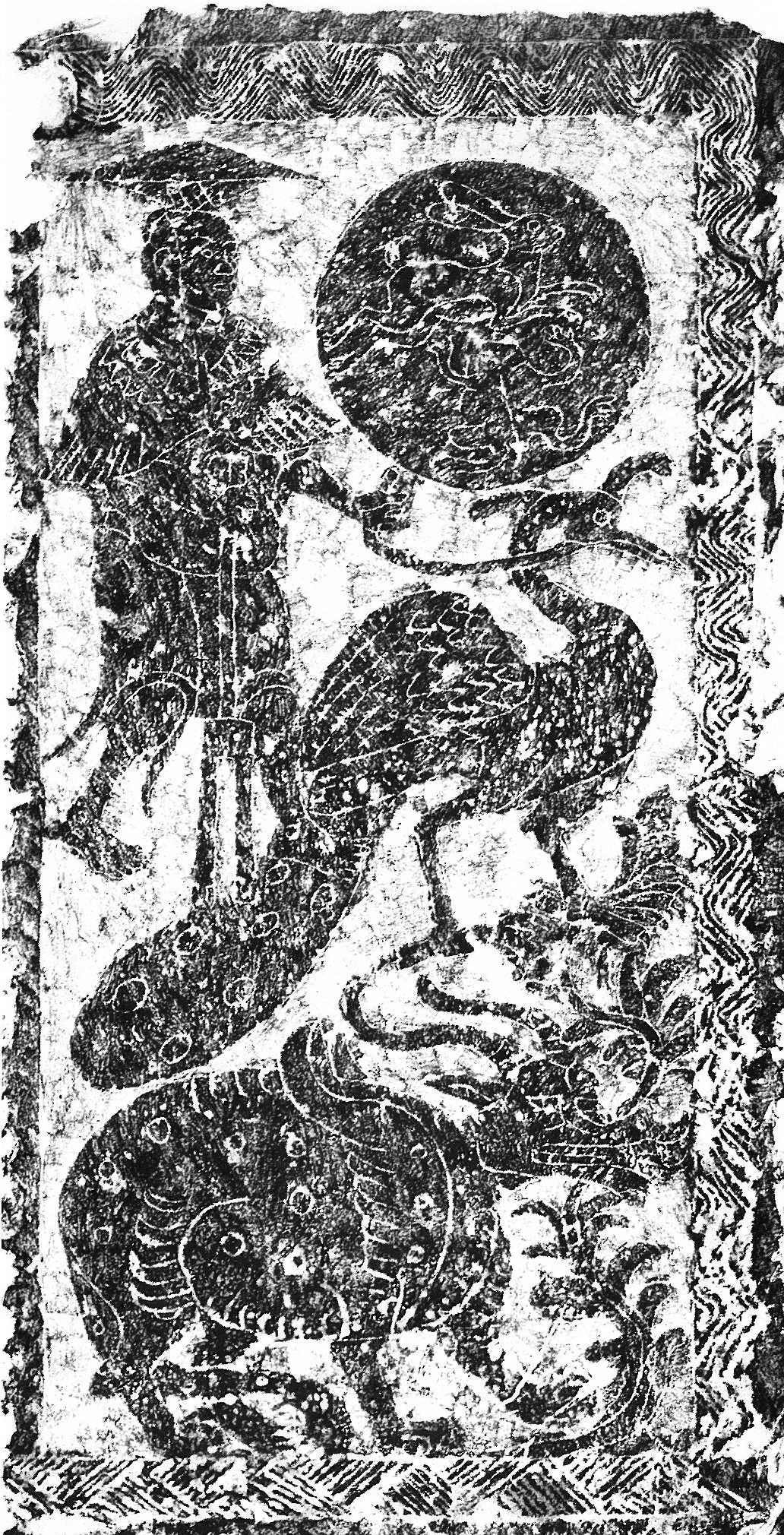Shen Nong 神農, the "Divine Husbandman", also called Lord Shen Nong 神農氏, is a ruler in Chinese mythology and often named one of the Three Augusts 三皇 or the Five Emperors 五帝. His tribal name was Lieshan 烈山氏, Lishan 厲山氏 or Lianshan 連山氏, and he is also called Yi Qi 伊耆.
According to legend, he was the son of Andeng 安登, the consort of Emperor Shao Dian 少典, and was born after she had been impregnated by a dragon in Huayang 華陽. Shen Nong was very tall and had the head of a buffalo and the face of a dragon. He is called the inventor of agriculture and of medicine, especially pharmacology, as told in the books Huainanzi 淮南子, Soushenji 搜神記 and Shuyiji 述異記.
 |
Rubbing of a relief stone from the Han period, showing Shen Nong, holding a plough in his right hand and a long-tailed bird or phoenix in his left. According to legend, Shen Nong picked up sprouts which had fallen from the beak of the phoenix, and planted them into fields. In the upper right corner, the moon can be seen, inhabited by a rabbit and a toad (see the story of Chang E 嫦娥). The lower part of the image is occupied by a winged "pharmacology beast" (yaoshou 藥獸), symbolizing Shen Nong's detection of the pharmacological effect of many wild plants. Unearthed in Tongshan 銅山, Jiangsu, and kept in the Museum of Xuzhou (Xuzhou Bowuguan 徐州博物館). 54 × 105 cm. Source: Zhongguo meishu quanji bianji weiyuanhui 《中國美術全集》編輯委員會, ed. (1993). Zhongguo meishu quanji 中國美術全集, Huihua bian 繪畫編, Vol. 18, Huaxiangshi huaxiangzhuan 畫像石畫像磚 (Shanghai: Shanghai renmin meishu chubanshe), no. 65. |
In a time when the population increased and there were not enough animals (game) to feed them, he instructed mankind in the use of the plough and to plant the five grains (wugu 五穀). He also dug out the first well, out of which a large number of wells mushroomed that helped irrigating the country. His son Zhu Huan 柱還 transmitted the knowledge of cultivating vegetables. The invention of pottery, metallurgy and weaving are also attributed to him, as well as the setting up of markets for exchange. These inventions are reported in the books Yishi 繹史 and Shiyiji 拾遺記, as well as in commentaries to the universal history Shiji 史記.
Shen Nong is also venerated as the inventor of the family in a time when humans only knew their mothers and not their fathers. As the inventor of pharmarcology, authorship of the oldest, anonymous pharmacopeia, the Bencaojing 本草經, is attributed to Shen Nong. If interpreted historically, Shen Nong can be seen as the person initiating the Neolithic age.
Shen Nong is often identified with the Red Emperor (Yandi 炎帝) who lived at the banks of River Jiang 姜水 (a tributary creek of the River Wei 渭水 in southern Shaanxi) and was successor of Emperor Fu Xi 伏羲. His element was fire (huo 火), and his first capital Chen 陳, later Qufu 曲阜. He reigned for 120 years and was married to a daughter of Lord Bengshui 奔水氏.
A legend popular in eastern Sichuan says that Shen Nong died when he tested a poisonous herb.